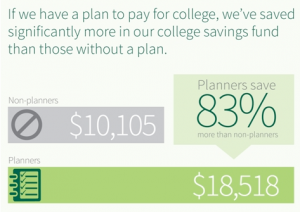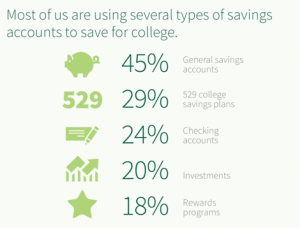It’s just about back-to-school time again. If you have young children, you might be hustling them to the store for backpacks and binders. But if you fast-forward a few years, you can envision driving your kids a little farther — to their college dorms. And when that day comes, you’ll want to be financially prepared. So you’ll want to avoid making costly mistakes when preparing for, and paying, those big bills. Here are some of the most common of these errors:
1. Not saving enough. Only half of all families with children younger than 18 save any money for college, a ccording to a recent study by Sallie Mae, the country’s largest originator of federally insured student loans. You might find it easier to save for college if you automatically move a set amount each month from your checking or savings account to a college savings vehicle.
ccording to a recent study by Sallie Mae, the country’s largest originator of federally insured student loans. You might find it easier to save for college if you automatically move a set amount each month from your checking or savings account to a college savings vehicle.
And to make matters worse, only half of parents who are saving for college have set a goal amount. If you fail to plan, then you plan to fail. Since the average savings totals are only around $15,000 and most public college costs are $20,000 for EACH year, many parents simply are not planning or are drastically under-estimating how much they need to save for college.
2. Not considering vehicles with growth potential. The same Sallie Mae study found more parents use a general savings account than any other method of saving for college. But since most savings accounts these days pay only a minimal rate of return, you will have trouble getting the growth potential you need to achieve your college savings goals.
Consider working toward your college savings goals by investing in a vehicle specifically designed for college, such as a 529 plan or a Coverdell plan. There are differences between these plans, such as contribution limits and tax treatments, but both allow you to invest for growth potential. As with any investment account, there are risks involved, including market risk.
3. Taking out 401(k) loans. Your employer may allow you to take out a loan against your 401(k) to help pay for college. But this may not be a good idea for two reasons: First, when you remove money from your 401(k) — even if you plan on eventually paying it back — you will slow the potential accumulation in your account, thereby depriving yourself of resources you will eventually need for retirement. Second, should you leave the company, you might have to repay the loan within a limited number of days.
4. Not using available tax credits. Depending on your income, you might qualify for the American Opportunity tax credit, which is worth up to $2,500, provided you spend at least $4,000 on college expenses. Check with your tax professional to see if you qualify for this credit and how to most effectively incorporate it. And be careful you don’t waste the credit, because you may not be able to use it and your plan distributions at the same time.
Paying for college can be challenging — but if you can avoid making the above mistakes, you’ve got a better chance of getting your kids through school without derailing the progress you’d like to make toward your other financial goals. Contact us if you need college planning advice or help with financial aid applications.
